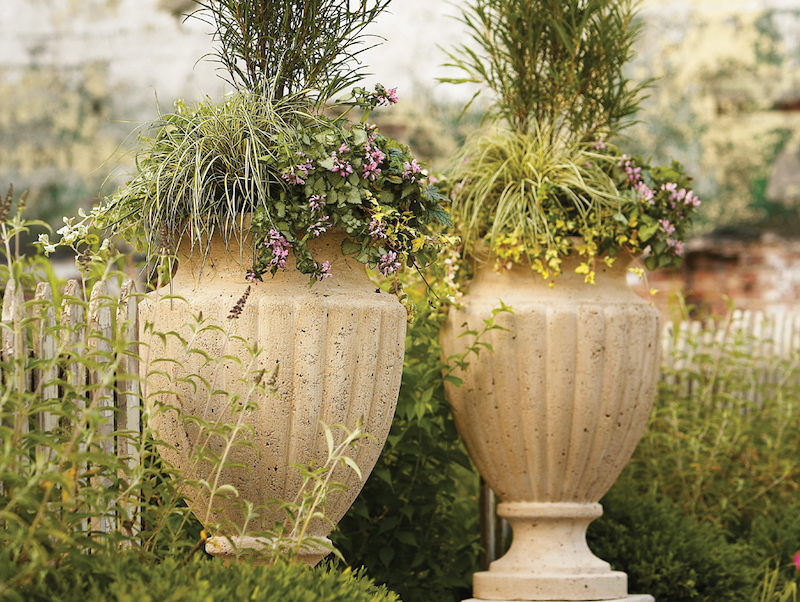Growing Dead Nettle
Searching for an adaptable, fast-growing perennial to employ as groundcover in a shady area of your yard? Dead Nettle, also known as Lamium, is hard to beat. Featuring clusters of delicate florets in various colors from spring until summer, Dead Nettle plants are a great source of nectar for bees. Native to parts of Asia and Europe, these compact, semi-evergreen, herbaceous perennials grow to 6-9 inches tall and 12-24 inches wide. Not to be mistaken for unrelated Stinging Nettle, Dead Nettle plants do not have the stinging hairs that Stinging Nettles do.

The most common species of Dead Nettle found in your local shady garden is the compact Spotted Dead Nettle, or Lamium maculatum. It has highly textured, diversified, cordate foliage and flowers. Regardless of the particular species, however, these versatile, vigorous plants are cold hardy in zones 4 to 8, resistant to disease and critters, easy to care for, and low maintenance, making this family of fast spreaders a busy, amateur gardener’s dream.
Planting Dead Nettle
Choose a partial to fully shaded spot. Dead Nettle tolerates a variety of soils; however, it prefers loamy, moist soil that drains well. If necessary, improve the soil’s ability to drain by amending it with compost or sand. This plant grows best in soil with a neutral pH. Apply 1 to 2 inches of compost/mulch around the root zone of the plant to conserve moisture. Depending on the species, space plants anywhere from 3 to 16 inches apart. Plant with other shade-loving companions, including hostas, ferns, foxglove, hellebores, and primrose.

Watering Dead Nettle
Dead Nettle, a perennial, possesses average watering needs. Ensure this showy herbaceous ornamental receives at least one inch of water per week, especially until established. After the roots are established, water twice per week. Dead Nettle is susceptible to fungal disease, so conduct a moisture check prior to watering. If the top one inch of soil is dry, then water. If not, wait a day or two to check again. In shadier spots, it can tolerate periods of less water; however, in sunnier locales, Dead Nettle will perform better in moist soil. Adding a layer of mulch will help prevent unnecessary water loss due to dehydration.
Fertilizing Dead Nettle
Dead Nettle is not a heavy feeder. If the soil is nutrient deficient, apply compost or a balanced (10-10-10) fertilizer in early May to encourage foliage growth. Then in July, offer a second application to support flowering.
Pruning Dead Nettle
While its showy blooms provide interest from early spring until summer and sometimes again during autumn, the fast-growing Dead Nettle, a member of the mint family, does require light pruning to keep the foliage tidy. Dead Nettle’s foliage will die and fall off naturally, but deadheading throughout the blooming season will encourage production of more flowers. You can also thin Dead Nettle during the summer to control its growth and maintain a more manageable size. At the end of the flowering period, shear or cut back growth by a third to refresh the foliage.
Caring For Dead Nettle in Pots
Dead Nettle is a superb choice for “spiller” in “thriller/spiller/filler” combinations. Plant it with coral bells, delphinium, and phlox in containers. Choose a container with enough room for this fast-growing perennial’s roots to grow. A 12-inch or 15-inch pot is a fine choice to start. Make sure the soil is loamy, moist, and drains well. A general-purpose potting soil amended with perlite and compost will suffice. Avoid clay soils.

Winter Care for Plant Dead Nettle
If you did not shear Dead Nettle during the middle of summer, cut it back to a few inches after autumn’s first frost to overwinter. Alternatively, you can leave the spent foliage on the plant until early spring. The foliage will help to cover and insulate the roots from the cold while providing shelter for overwintering insects.
Common Dead Nettle Care Questions
How Do You Clean Dead Nettles?
Simply pull the weeds up by the roots or cut them for about half an inch from the ground, and gently shake to remove any dirt or bugs.
What Are The Benefits of Dead Nettle?
It is a medicinal herb- leaves can be applied to wounds and cuts as a poultice. that has astringent, purgative, diuretic, and diaphoretic properties. It's also anti-inflammatory, anti-fungal, and anti-bacterial. Fresh
Why Is My Dead Nettle Dying?
Too much sun exposure and not enough water would be the main reason for Dead Nettle to fade.
Is Spotted Dead Nettle Poisonous?
Spotted dead nettle is considered a culinary herb. Unlike nettles, it does not sting nor irritates the skin and it is generally more recognized as a groundcover in gardens than a wild edible.
Have a question about Dead Nettle? Fill out the form below and we will try and get back to your question as soon as possible. We may even feature your question in this article to help other gardeners!
 |
Author Suellen Barnes - Published 2-26-2023 |
